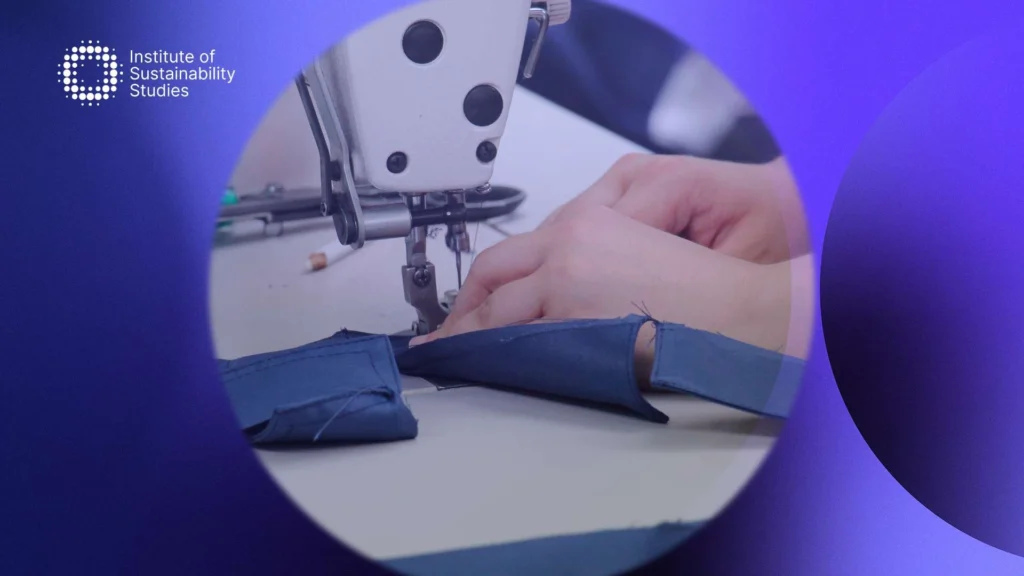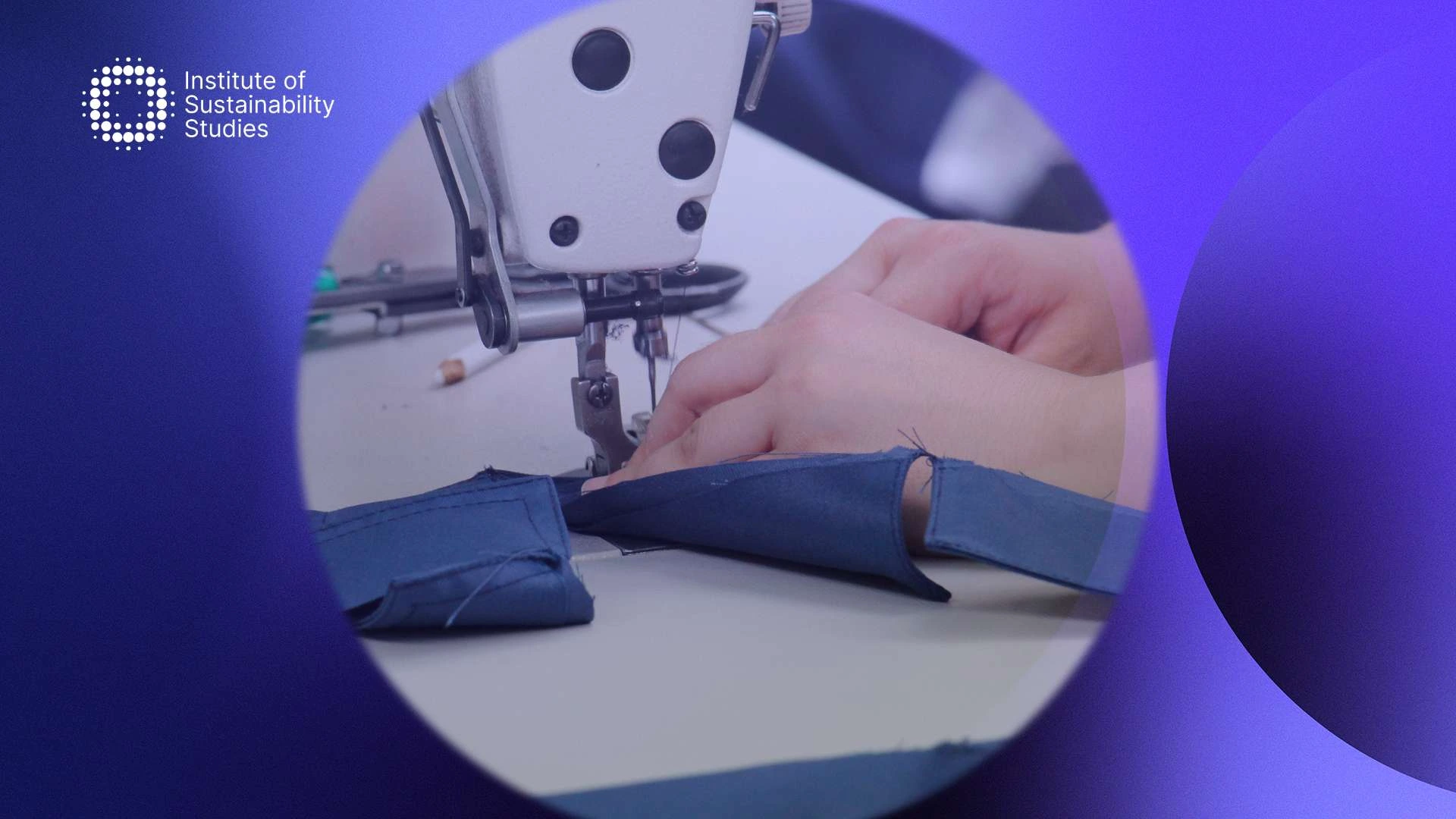As global consumption of clothing continues to surge, so too does the environmental burden it leaves behind. Each year, more than 5.8 million tonnes of textiles are discarded in the EU alone, with the majority ending up in landfill or incinerated – often after minimal use. This linear model is no longer tenable in a world facing resource constraints, rising regulation, and growing public scrutiny.
In response, governments are rethinking responsibility, and producers are increasingly at the centre of that shift. One policy tool gaining significant traction is Extended Producer Responsibility (EPR), which is rapidly becoming a critical component of forward-looking business sustainability strategies. For fashion and textile companies, this shift has profound implications for how they operate, report, and design for the future, and EPR for textiles is poised to reshape the industry.
What is Extended Producer Responsibility (EPR)?
Extended Producer Responsibility (EPR) is a policy approach that holds producers accountable for the entire lifecycle of their products, particularly the post-consumer stage. This includes the collection, recycling, and final disposal of products and packaging once they are discarded.
Under an EPR framework, producers may be required to:
- Finance or manage collection systems (eg: take-back schemes, deposit-return schemes).
- Report on product volumes placed on the market and how end-of-life management is handled.
- Collaborate with waste management providers to ensure responsible disposal and recycling.
EPR schemes can be voluntary or mandatory, and are often implemented through sector-specific regulations, such as for packaging, batteries, electronics (WEEE), or textiles. EPR for textiles is already gaining momentum in regions such as the European Union, Canada, South Korea, and India.
Get ahead of EPR for textiles with practical, policy-aligned
sustainability training
How EPR applies to the textile industry
EPR for textiles is being introduced globally to reduce the fashion industry’s environmental footprint and drive circular business models. Here’s how EPR for textiles is being applied in practice:
End-of-life responsibility
Textile producers are voluntarily or legally required to finance or organise systems for the collection, sorting, reuse, recycling, or responsible disposal of used textiles and garments.
This includes:
- Take-back schemes (in-store or online)
- Funding municipal textile waste management
- Investing in recycling infrastructure
Design for circularity
EPR for textiles encourages producers to design with the end in mind, promoting product longevity and recyclability. For example:
- Minimising the use of treatments or dyes that hinder recycling
- Avoiding fibre blends that are hard to separate
- Prioritising mono-material garments
Product labelling and traceability
To support efficient sorting and recycling, EPR policies often require:
- Clear labelling of fibre content and recyclability
- Digital Product Passports (as proposed by the EU) to enable traceability and tracking
Financial contributions and reporting
Producers may be obligated to:
- Pay eco-modulated fees – higher fees for less sustainable products
- Submit annual reports on volumes placed on the market and quantities recovered
Upcoming EU EPR regulations for textiles
The European Union is leading the development of a harmonised policy framework for EPR for textiles as part of a broader shift toward circularity:
- Mandatory EPR by 2025: Under revisions to the EU Waste Framework Directive, all Member States must introduce EPR schemes for textiles. Producers will be required to finance and organise end-of-life management through national Producer Responsibility Organisations (PROs).
- Separate collection systems: EU countries must ensure that used textiles are separately collected from household waste, establishing accessible take-back systems across retail and municipal channels.
- Eco-modulated fees: Producers will pay differentiated fees based on product circularity factors, such as durability, recycled content, and design complexity, penalising fast fashion and unsustainable design choices.
- Digital Product Passports (DPPs): A phased rollout between 2025 and 2030 will introduce DPPs for textiles, enabling traceability and access to data on materials, repairability, and end-of-life options. This complements new Ecodesign requirements under the EU’s Sustainable Products Regulation.
- Waste export restrictions: By 2026–2027, updates to the Waste Shipment Regulation will tighten controls on textile waste exports, prioritising local recycling and recovery.
Learn how to design products that meet EPR requirements and reduce compliance risk
EPR fees and compliance requirements
As EPR for textiles becomes mandatory across the EU and beyond, proactive preparation is essential. Apparel businesses should integrate EPR compliance into broader sustainability planning:
1. Producer registration
Textile producers, including brands, manufacturers, importers, and retailers placing textiles on the EU market, must register with a national Producer Responsibility Organisation (PRO) in each Member State where they operate. This includes providing details on product types, volumes, and market distribution.
2. Eco-modulated fees
EPR compliance involves paying annual fees to PROs. These fees are eco-modulated, meaning they vary based on the environmental performance of the product. Key influencing factors include:
- Material composition (e.g. recycled content, mono-materials)
- Design for durability and repairability
- Ease of disassembly and recyclability
- Sustainability labelling and traceability
Products that are harder to recycle or have higher environmental impacts will incur higher fees, whereas sustainable design choices may result in fee reductions or exemptions.
3. Data reporting and traceability
Producers must provide accurate annual reports detailing:
- Quantities of textiles placed on the market
- Materials used and product lifecycle characteristics
- Volumes collected, reused, or recycled (where applicable)
These disclosures are essential for:
- Calculating contributions
- Evaluating EPR scheme effectiveness
- Supporting ESG transparency and stakeholder engagement
In future, Digital Product Passports will streamline this reporting process, providing real-time data on product origin, composition, and end-of-life handling.
4. Penalties and enforcement
Non-compliance with EPR obligations, such as failure to register, report, or pay fees, may lead to:
- Fines or trading restrictions
- Market removal of non-compliant products
- Loss of access to certain public or private tenders
Member States will oversee enforcement, with some jurisdictions expected to implement progressive penalties and third-party audits.
How apparel companies can prepare for EPR
As EPR regulations for textiles become mandatory across the EU and other regions, apparel companies must act now to integrate compliance into both strategic planning and day-to-day operations. Beyond meeting regulatory requirements, early preparation supports brand resilience, customer trust, and circular innovation.
Here are actionable steps apparel businesses can take to prepare:
1. Map your EPR obligations by market
- Identify where your products are sold or distributed within the EU.
- Understand the specific registration, fee structures, and reporting rules in each Member State.
- Engage with national Producer Responsibility Organisations (PROs) early.
2. Audit product design and material composition
- Evaluate current product lines for recyclability, durability, and ease of disassembly.
- Prioritise mono-material designs and avoid components that hinder recycling (e.g. mixed fibres, complex trims).
- Begin integrating eco-design principles aligned with EU Ecodesign and Digital Product Passport standards.
3. Build Internal data and reporting capacity
- Establish traceability systems to track product composition, volume, and end-of-life options.
- Assign cross-functional roles (e.g. sustainability, compliance, product teams) to collect and manage EPR data.
- Prepare for annual reporting and potential third-party audits.
4. Redesign product labelling for circularity
- Start aligning labels with future digital product passport (DPP) requirements.
- Include clear fibre content and care instructions that support longevity and recyclability.
5. Pilot take-back and circular initiatives
- Trial collection programmes, resale partnerships, or closed-loop recycling schemes.
- Collaborate with recyclers, innovators, or NGOs working in textile recovery and reuse.
6. Engage suppliers and partners
- Communicate upcoming EPR requirements across your supply chain.
- Collaborate with manufacturers to adopt recyclable and responsibly sourced materials.
- Align sourcing decisions with eco-modulated fee incentives.
7. Upskill your teams
- Equip procurement, design, and compliance teams with targeted sustainability training.
Conclusion
EPR for textiles signals a fundamental shift in how the fashion industry approaches responsibility and resource management. As regulation evolves and consumer expectations heighten, apparel companies must embed circularity into design, operations, and supply chains.
Looking ahead, EPR will define the next chapter of sustainability in fashion — influencing policy, investment, and innovation. Businesses that respond early and strategically will not only stay ahead of regulation but also lead the transition toward more resilient, ethical, and future-ready textile systems.
Dedicated to harnessing the power of storytelling to raise awareness, demystify, and drive behavioural change, Bronagh works as the Communications & Content Manager at the Institute of Sustainability Studies. Alongside her work with ISS, Bronagh contributes articles to several news media publications on sustainability and mental health.
- Bronagh Loughlinhttps://instituteofsustainabilitystudies.com/insights/author/bronagh/
- Bronagh Loughlinhttps://instituteofsustainabilitystudies.com/insights/author/bronagh/
- Bronagh Loughlinhttps://instituteofsustainabilitystudies.com/insights/author/bronagh/
- Bronagh Loughlinhttps://instituteofsustainabilitystudies.com/insights/author/bronagh/











